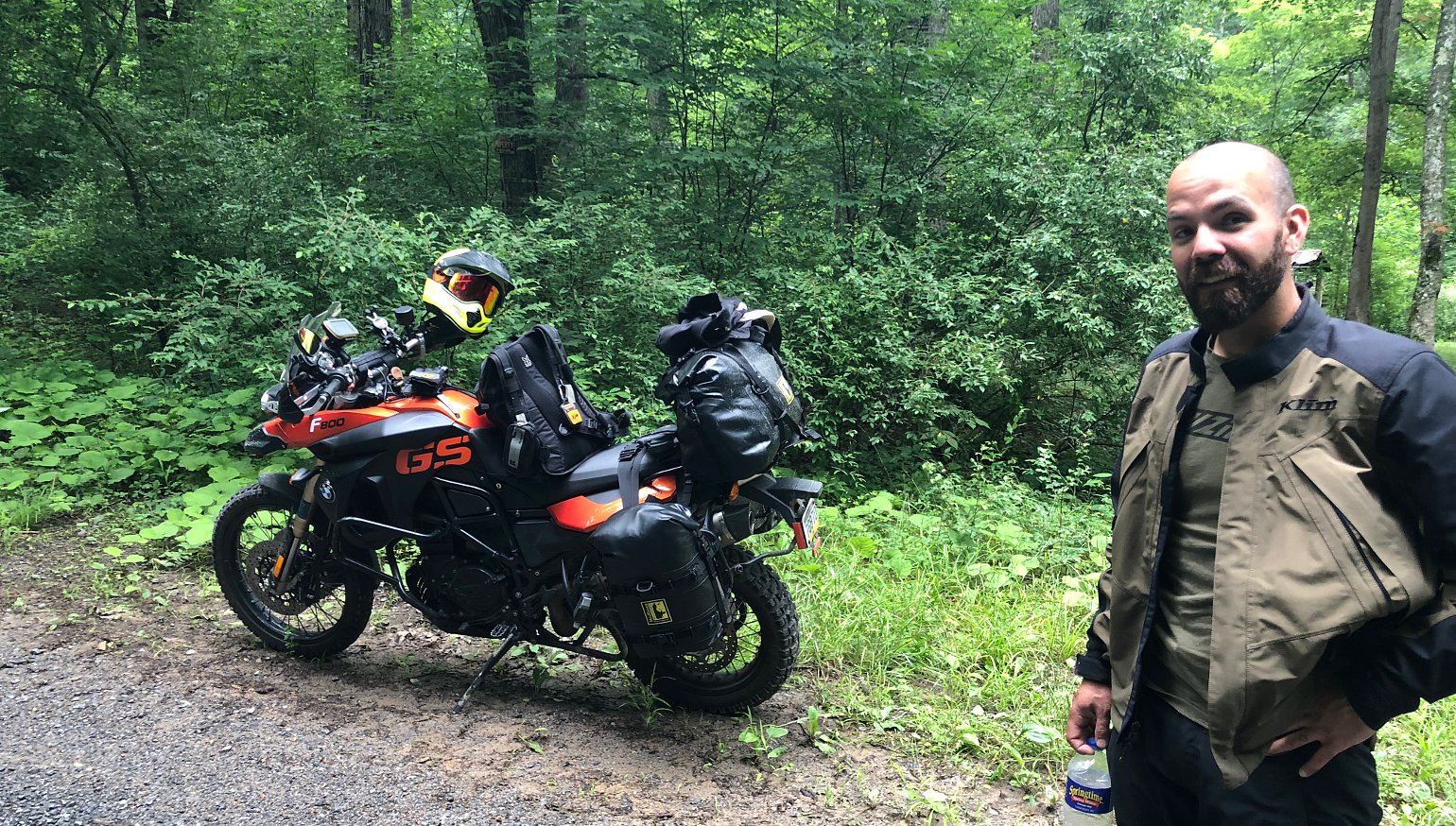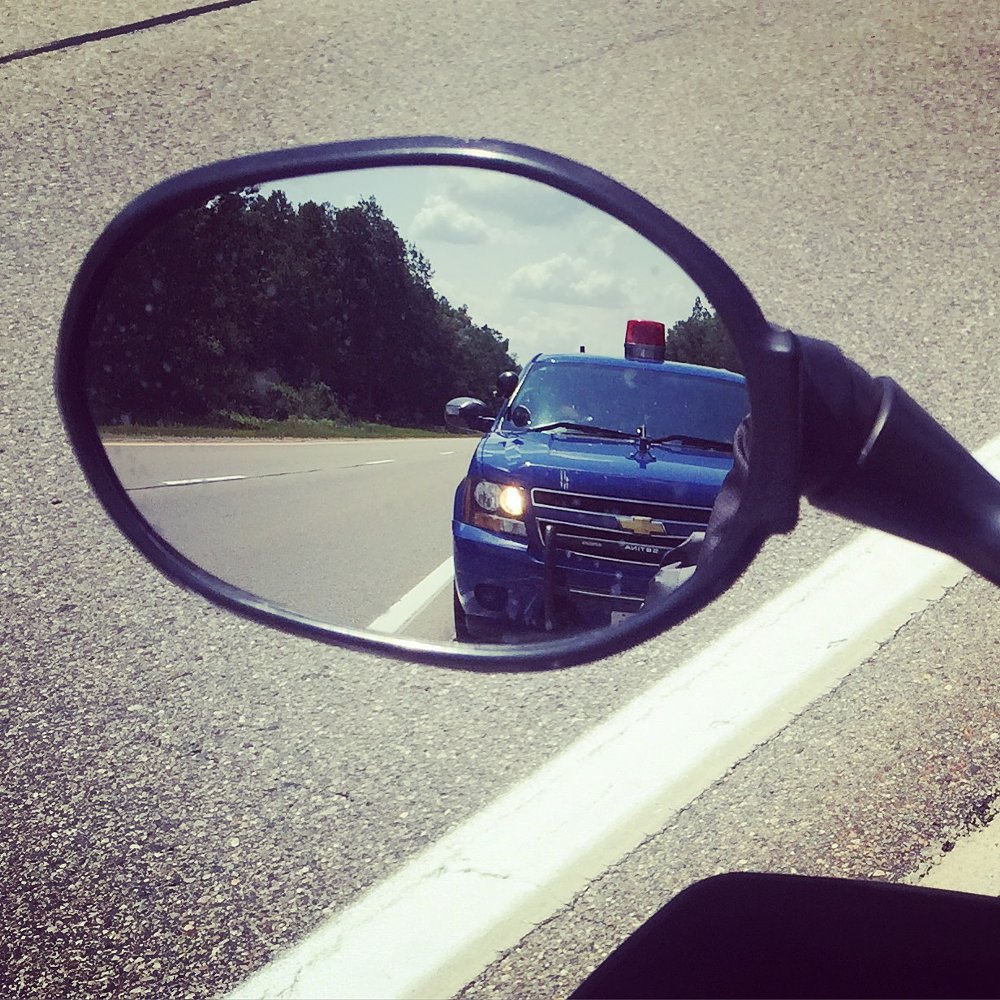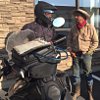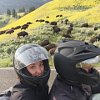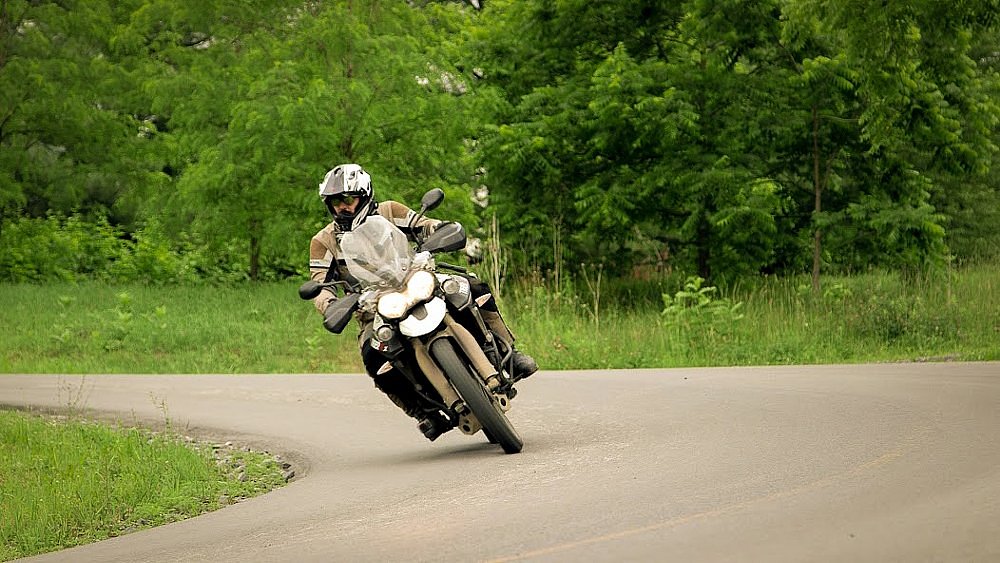You bought yourself the latest and greatest ADV bike, bolted on the best crash protection and luggage you could find and geared up in fresh ADV kit. You’re finally heading out on a big, multi-day adventure ride. While your gear and equipment are able to handle what lies ahead, are you mentally prepared?
If you’re really venturing off the beaten (and smoothly paved) path, you’re going to encounter a wider range of conditions and challenges than you would on a highway trip. Success depends not just on having the right equipment. You also need the right attitude and perspective.
Here are three of my personal tips to help you get your head in the right place for a long adventure ride.
Forget about reaching a certain mileage per day
A few years ago on a trip from New Jersey out to Banff National Park in Alberta, Canada, my wife and I tackled the Beartooth Highway in Wyoming two-up after an already incredibly long, albeit warm and dry day in the saddle. As we reached the highest elevations, the sun set and thunderstorms rolled in, drastically reducing our vision and available traction as temperatures plummeted.
Why did I feel the need to plow through even more miles that day and fail to really enjoy Beartooth Pass? In hindsight, stopping early for a good night’s rest and tackling the world-famous road in the morning would have been much more enjoyable and safer.
It’s possible to do 400 to 700 miles per day on pavement on a big trip. On an adventure bike, where you may potentially be riding difficult terrain for many miles at slow speeds, it can be hard to even reach 250 miles in a day. I have definitely regretted blasting past scenic overlooks or interesting roadside attractions because I felt like I could not spare the time or that I needed to get a certain number of miles before setting up camp. Leaving yourself enough time at the end of the day to enjoy a nice dinner, choose a decent campsite and build a warming fire is so much more enjoyable than setting your tent up on a rocky, slanted piece of earth, so tired and cross-eyed you barely have the energy to take your boots off, let alone build a fire.
My advice: Don’t fall victim to arbitrary daily mileage goals. You’re supposed to be enjoying this, not rushing through it to get it done. Take time to relax and enjoy your surroundings in the good parts, and if you’re running short on PTO, make up time on the interstate through the less interesting parts.
Make sure your brain is as adaptable as your motorcycle
One of the things we love about today’s adventure bikes is how capable they are of handling a wide range of riding, from highways to backwoods trails. But the motorcycle can’t do anything without the rider, so make sure you’re adaptable, too.
I have been riding since I was a kid, so I have about 35 years of riding and racing experience on two wheels, both on- and off-road. But on an ADV bike, I still find it incredibly jarring to go from carving up the twisties on the blacktop at high speeds to suddenly heading up a gnarly, steep, rutted, rocky and rooty trail at much slower speeds, then eventually back to pavement. The mental shift it takes to adapt from on-road to off-road riding on the same bike is difficult.
Hell, even trying to pick out something to eat at the local lunch spot is too mentally taxing after several hours on the bike. I usually need a few minutes to get my brain back in order after shutting the bike off even to just have a basic conversation. One too many concussions? Maybe, but I have heard the same thing from several other riders over the years.
It’s OK to take a breather between these vastly different terrains. Just give yourself 10 or 15 minutes to relax and enjoy the scenery and recalibrate your mind. Now is a good time to open the vents in your riding gear or maybe put on a lighter set of gloves to make sure you’ll be comfortable under different circumstances.
A quick walk through an upcoming technical off-road section can help you visualize the best line and get you in the right mindset for the challenge. On the other end, be careful when going from slow, technical terrain back to those fast sweepers. It is easy to breathe a sigh of relief and twist the throttle once your tires are back on tarmac, but consider a loaded ADV bike takes more steering and braking input at speed, especially with aggressive knobby tires at lowered air pressures. Slowly dial the speed back up when you’re back on the blacktop. You sure don’t want to conquer a tough and technical off-road section, only to bin it on the street shortly thereafter.
Being prepared doesn’t mean worrying the fun out of the ride
On a recent ride up the North East Backcountry Discovery Route, my bud Peter and I were dreading the intimidating “Class IV” roads in Vermont. The stories I had heard from other riders and the descriptions on our maps had us expecting certain disaster for our heavy, fully loaded ADV bikes, even though we are both experienced ADV, dirt bike and mountain bikers.
It took us a few days to get to the tough stuff and of course it started raining shortly beforehand, which added to our nervousness. We were dealing with wet, slippery rocks, steep terrain and limited visibility. As we rode through, there were a few climbs we had to attempt a couple times. We both fell over once or twice. We laughed and howled and ended up having a blast. When we made it through the rough stuff, back to the easier terrain, I felt pretty dumb for having worried about it for days.
It’s easy to picture an upcoming water crossing as raging rapids that will surely sweep my bike and me away to a watery grave or to imagine the next technical section as a bike-swallowing mud pit of death. Most of the time, the reality is that the water is only up to my axles, and if I do encounter handlebar-deep raging rapids, I’ll find a go-around.
Yes, be prepared for hot, cold, wet or dry days. Be ready to fix a flat or zip-tie a busted skid plate. Carry food, water and tools. Wear decent riding gear. Ride a reliable bike. Bring a good friend or two. But understand that you cannot possibly be 100 percent prepared for every scenario. That is part of the adventure!
The best mental approach is to be prepared, have a loose plan, stay flexible and not worry about it too much in advance. Day-to-day life gives us plenty to worry about, so why waste your precious ride time worrying yourself to death?
It’s not all in your mind, but a lot of it is
Mentally preparing yourself for your next big adventure bike trip is just as important as having the appropriate bike, gear and farkles.
Leaving home with a good attitude and being flexible as situations change on a long trip will make it far more likely you'll have fun. Set reasonable expectations instead of thrashing through your trip at a mind-melting pace. Give yourself time to enjoy the scenery and recalibrate your mind along the way. As our buddy Spurg always says, “Enjoy the ride!”




